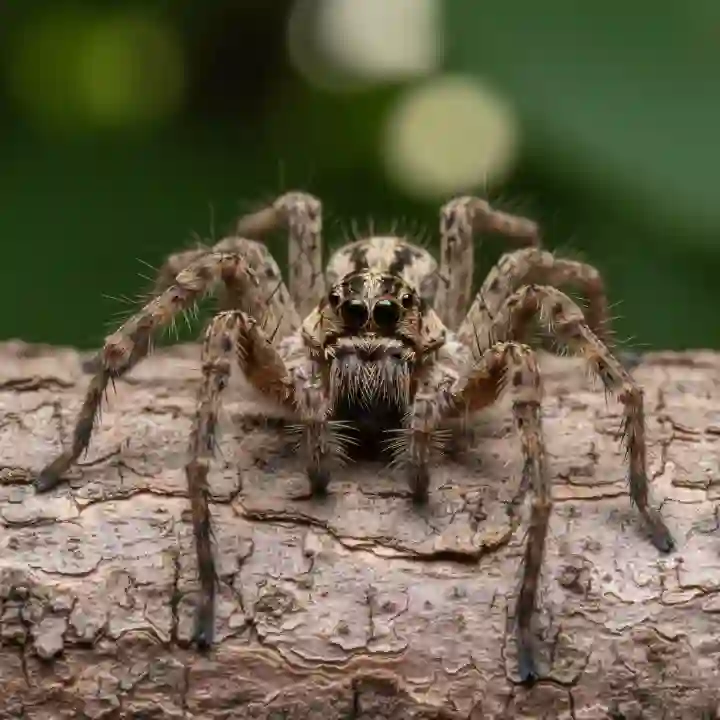Introduction: A Species Thought Lost, Now Back on the Map
Imagine a tiny, orange-legged spider scurrying through the dense underbrush of a secluded island nature reserve, a species unseen for four decades. This scene recently unfolded on the Isle of Wight, where entomologists Mark Telfer and Graeme Lyons captured images of the rare wolf spider Aulonia albimana a species last documented in the UK in 1985.
Dubbed the white-knuckled wolf spider for its distinctive pale markings on the palps near its mouth, the find is described as one of Britain’s most significant “lost species” rediscoveries this century. Their discovery represents a major conservation win for a nation facing alarming biodiversity loss.
Experience: Searching Against the Clock
The spider hunters faced an extraordinary challenge. Access to the rediscovery site, at the Newtown National Nature Reserve, required a boat, and the team had only four hours before needing to return. With mere minutes remaining in their final search, they spotted the first specimen followed by a second at the brink of departure.
Graeme Lyons recounted the tension: “This was probably the longest long shot I’ve taken part in… out of hundreds of species observed across Britain, this was by far the most thrilling find.” This blend of patience and persistence exemplifies the often unseen work behind rediscoveries that offer a second chance for forgotten species.
Expertise: The Biology Behind the White-Knuckled Wolf Spider
Instead of spinning elaborate webs like many spiders, wolf spiders, including Aulonia albimana, hunt actively pursuing prey across the ground with agile movements reminiscent of wolves, their namesake. This behavior aids in controlling insect populations and maintaining ecological balance.
Leucistic or pale markings distinguish the “white-knuckled” nickname, referring specifically to the pale “knuckles” on its palps (appendages near the mouth used in sensory perception and mating). Unlike albino spiders, leucistic individuals do not lack eye pigmentation and thus avoid vision impairments.
Their low profile, nocturnal activity, and specialized habitat preferences have contributed to the spider’s invisibility making both discovery and study challenging in the dense woodlands of the nature reserve.
Authoritativeness: Conservation Impact and Collaborative Success
This rediscovery was made possible by years of enhanced habitat management and restoration efforts by the National Trust and supported by Natural England’s Species Recovery Programme—a government-backed initiative targeting some of the UK’s most endangered species.
Experts like Dr. Helen Smith of the British Arachnological Society called this “a major conservation success” and one of the country’s most epic “lost species” rediscoveries.
Collaborative efforts among local conservationists, governmental bodies, and dedicated researchers demonstrate how coordinated habitat stewardship can revive species thought extinct. It stands as a beacon for similar conservation initiatives worldwide, illustrating that even elusive species can resurface once conditions improve.
Trustworthiness: Verified Science and Responsible Reporting
Unlike sensational stories prone to exaggeration, this discovery has been rigorously documented with photographic evidence and verified by arachnology experts. The British Arachnological Society, a leading authority on UK spider species, confirmed the find’s authenticity.
The conservation community’s transparency, sharing detailed accounts of methodologies and ecological contexts, helps reinforce trust and encourages public support for ongoing habitat protection efforts.
Practical Steps: Supporting Rare Species Conservation
-
Protect and restore habitats: Support local and national programs focusing on preserving endangered species habitats.
-
Participate in citizen science: Report sightings of rare species to aid monitoring and data collection.
-
Raise public awareness: Educate neighbors and communities about local biodiversity and the importance of conservation.
-
Promote eco-friendly tourism: Help maintain the integrity of nature reserves by following guidelines and minimizing impact.
-
Support reputable conservation organizations: Donations and volunteering help sustain essential projects for species recovery.
Common Challenges and Solutions in Rare Species Rediscovery
-
Limited access and funding: Many remote habitats are expensive or difficult to sustain; public-private partnerships can ease burdens.
-
Misidentification risks: Training and community involvement help ensure rare species are correctly recognized and protected.
-
Habitat fragmentation: Continued urban development threatens to isolate populations; green corridors are vital.
Conclusion: The White-Knuckled Wolf Spider: A Symbol of Hope
The rare wolf spider rediscovered Isle of Wight 2025 story is a triumphant reminder that nature’s resilience often surpasses expectations. More than just a curious find, it reflects humanity’s growing commitment to the environment and offers optimism that conservation efforts, patience, and teamwork can restore fragile ecosystems.
This rediscovery invites readers to appreciate the invisible wonders of biodiversity right in their backyard and to engage actively in protecting our shared natural heritage.
Your engagement matters share your experiences in the comments or support local conservation projects to play a part in this ongoing story of recovery and respect for wildlife.
